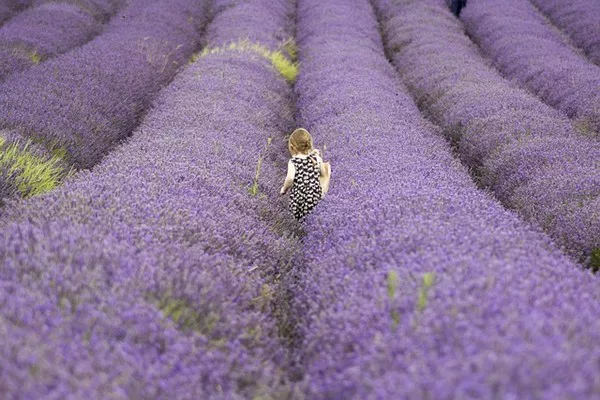Lavender, with its soothing fragrance and vibrant purple hues, is a beloved herb that’s cherished for its various uses. From aromatherapy to culinary delights, lavender’s versatility knows no bounds. However, preserving lavender flowers requires careful attention to detail to maintain their color, fragrance, and medicinal properties. Whether you’re a lavender enthusiast or a beginner looking to explore its wonders, understanding the art of preservation is crucial. In this comprehensive guide, we’ll delve into the various techniques and tips to effectively preserve lavender flowers for long-lasting enjoyment.
Understanding Lavender
Before delving into preservation techniques, it’s essential to understand the characteristics of lavender flowers. Lavender, scientifically known as Lavandula, belongs to the mint family, Lamiaceae. It’s native to the Mediterranean region but is cultivated worldwide for its aromatic and ornamental qualities. Lavender blooms in summer, typically from June to August, and its flowers are known for their distinctive fragrance and vibrant color.
Choosing the Right Lavender
When it comes to preserving lavender flowers, selecting the right variety is crucial. English lavender (Lavandula angustifolia) and Lavandin (Lavandula x intermedia) are two popular species known for their intense fragrance and vibrant blooms. English lavender, with its compact and bushy growth habit, is prized for its high essential oil content, making it ideal for culinary and therapeutic purposes. Lavandin, a hybrid of English lavender and spike lavender (Lavandula latifolia), boasts larger flowers and is commonly used in commercial lavender production.
When selecting lavender for preservation, opt for freshly harvested blooms with vibrant color and strong fragrance. Avoid flowers that show signs of wilting or discoloration, as they may not preserve well.
Harvesting Lavender
Timing is crucial when harvesting lavender flowers for preservation. The best time to harvest is in the morning after the dew has dried but before the sun is at its peak. This ensures that the flowers are at their peak fragrance and oil content.
Using sharp pruning shears, cut lavender stems just above the foliage, leaving a few inches of stem attached. Harvesting stems with buds that have just begun to open ensures maximum fragrance and color retention during the preservation process.
Preservation Techniques
There are several methods for preserving lavender flowers, each offering unique benefits in terms of color retention, fragrance, and longevity. Let’s explore some popular preservation techniques:
1. Air Drying:
Air drying is one of the simplest and most traditional methods for preserving lavender flowers. To air dry lavender, gather small bunches of stems and secure them with twine or rubber bands. Hang the bunches upside down in a dry, well-ventilated area away from direct sunlight. It typically takes 1-2 weeks for lavender to dry completely using this method.
Air-dried lavender retains its color well and maintains its fragrance for an extended period. Once dried, gently remove the flowers from the stems and store them in airtight containers away from light and moisture.
2. Microwave Drying:
Microwave drying is a quick and convenient method for preserving lavender flowers, ideal for those looking for a fast turnaround. To microwave dry lavender, place small bunches of stems between paper towels and microwave them in short bursts of 30 seconds to 1 minute until dry.
This method preserves the color of lavender flowers relatively well but may result in some loss of fragrance compared to air drying. Ensure that the lavender is completely dry before removing it from the microwave to prevent mold formation.
3. Freeze Drying:
Freeze drying is a popular method for preserving lavender flowers while retaining their vibrant color and fragrance. To freeze dry lavender, spread the flowers in a single layer on a baking sheet and place them in the freezer until frozen solid. Once frozen, transfer the flowers to airtight containers or vacuum-sealed bags and store them in the freezer.
Freeze-dried lavender maintains its color and fragrance exceptionally well and can last for several months or even years when stored properly. This method is ideal for preserving lavender intended for culinary use, as it retains the herb’s flavor profile effectively.
4. Glycerin Preservation:
Glycerin preservation is a unique method that involves soaking fresh lavender stems in a mixture of water and glycerin to replace the plant’s natural moisture with glycerin. To preserve lavender with glycerin, create a solution of one part glycerin to two parts water and place the stems in the solution.
Glycerin-preserved lavender retains its color and flexibility, making it ideal for crafting purposes such as floral arrangements and wreaths. However, the fragrance of glycerin-preserved lavender may be less intense compared to other preservation methods.
Storage and Usage
Once lavender flowers are properly preserved, it’s essential to store them correctly to maintain their quality over time. Store dried lavender in airtight containers, away from light and moisture, to prevent degradation of color and fragrance. Label containers with the date of preservation for reference.
Preserved lavender can be used in various applications, including:
Aromatherapy: Add dried lavender flowers to potpourri, sachets, or homemade candles for a natural fragrance boost.
Culinary: Use dried lavender buds in cooking and baking to add a subtle floral flavor to dishes such as desserts, teas, and infused syrups.
Decor: Incorporate preserved lavender into floral arrangements, wreaths, and crafts for a touch of natural beauty and fragrance.
Conclusion
Preserving lavender flowers allows enthusiasts to enjoy their beauty, fragrance, and medicinal properties long after the blooming season has ended. Whether air drying, microwave drying, freeze drying, or using glycerin preservation, each method offers unique benefits in terms of color retention, fragrance, and longevity. By following proper harvesting and preservation techniques and storing lavender flowers correctly, enthusiasts can savor the beauty and aroma of lavender year-round, adding a touch of natural elegance to their homes and culinary creations.


